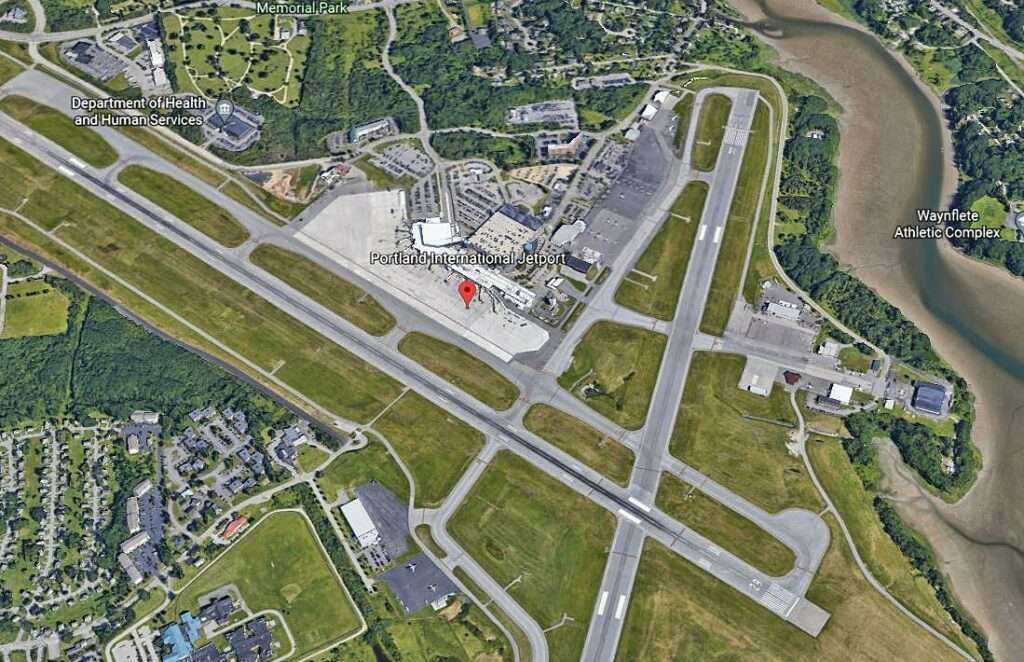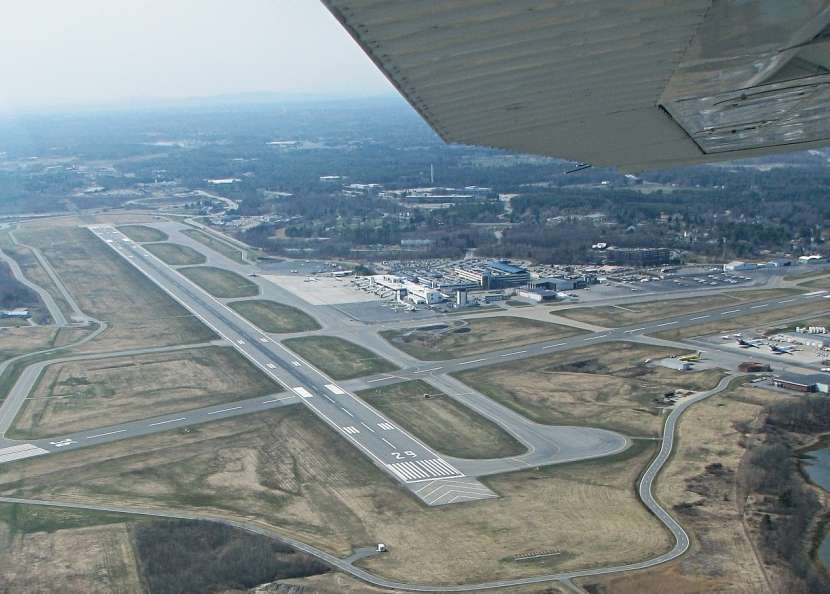Portland International Jetport (PWM), Maine’s busiest airport, boasts a rich history intertwined with the state’s growth and evolving travel landscape.
This article explores the Jetport’s journey, from its modest beginnings as a municipal airfield to a key transportation hub connecting Maine to the world.

Early Days: Taking Flight (1920s-1950s)
The story of PWM begins in the 1920s, a period when commercial aviation was taking its first steps.
Recognizing the potential of air travel, Portland city officials identified a need for a dedicated airfield.
In 1927, they secured land in what was then known as Back Cove, a marshy area west of the city.
The following year, the “Portland Municipal Airport” officially opened, a simple dirt airstrip catering to a handful of small prop planes.
The early decades were marked by gradual development.
In 1930, the first paved runway was constructed, enabling larger aircraft to operate.
Passenger traffic remained limited, with scheduled commercial flights only arriving in the late 1930s. World War II significantly impacted the airport.
The federal government requisitioned the facility, using it for military training and transport.
While civilian use was paused, the wartime expansion laid the groundwork for future growth.
Following the war, Portland Municipal Airport transitioned back to civilian control.
Eastern Airlines inaugurated the first scheduled passenger service in 1946, connecting Portland to Boston and New York.
The 1950s witnessed a surge in commercial aviation, with airlines like Northeast Airlines and Bar Harbor Airlines establishing routes to other regional destinations.
The Jet Age Arrives: Expansion and Modernization (1960s-1980s)

The 1960s ushered in the jet age, revolutionizing air travel.
Recognizing the need for a facility capable of handling larger jet aircraft, the City of Portland embarked on a significant expansion project.
A new terminal building, designed to accommodate the increased passenger volume, opened in 1967.
The iconic control tower, still a prominent landmark today, was also constructed during this period.
The expansion coincided with the arrival of jet service at PWM. Eastern Airlines introduced the first jet flights in 1962, followed by other major carriers.
This shift in technology significantly reduced travel times, making long-distance destinations more accessible.
Passenger numbers soared, solidifying PWM’s position as Maine’s primary air gateway.
The 1970s and 1980s saw continued growth and modernization efforts.
New airlines joined the scene, offering passengers a wider range of travel options.
The terminal building underwent renovations to improve passenger amenities and accommodate the growing number of flights.
Additionally, safety upgrades were implemented to meet increasingly stringent regulations.
The Rise of Low-Cost Carriers and Evolving Landscape (1990s-Present)
The 1990s marked a shift in the airline industry with the rise of low-cost carriers.
Southwest Airlines entered the Portland market in 1993, offering budget-friendly fares and stimulating competition.
This shift made air travel more affordable for a wider segment of the population, further contributing to passenger growth at PWM.
The new millennium brought new challenges and opportunities.
The events of 9/11 significantly impacted the aviation industry, leading to stricter security measures and a temporary decline in passenger traffic.

However, PWM recovered steadily, and the following years witnessed the arrival of new airlines like JetBlue and Frontier, offering increased competition and a wider variety of destinations.
Today, PWM is a bustling hub with a focus on convenience and efficiency.
The airport offers nonstop flights to over a dozen domestic destinations and connections to various international locations.
The terminal building has undergone further renovations to enhance the passenger experience, featuring modern amenities, shops, and restaurants.
Looking ahead, PWM faces the challenge of adapting to a continuously evolving travel landscape.
Sustainability is a growing concern, and the airport is exploring ways to reduce its environmental impact.
Additionally, technological advancements in aviation may influence future operations and infrastructure needs.
Conclusion: A Vital Link to the World
Portland International Jetport in Maine has come a long way from its humble beginnings as a dirt airstrip.
Today, it serves as a vital link, connecting Maine to the world and facilitating the movement of people and goods.
The Jetport’s history reflects the state’s economic development and the ever-changing nature of air travel.
As Portland International Jetport looks towards the future, it remains committed to providing a safe, efficient, and enjoyable travel experience for its passengers.

Click the banner to subscribe to our weekly newsleter.

Click the photo to join our WhatsApp channel so then you can stay up to date with everything going on in the aviation industry!









